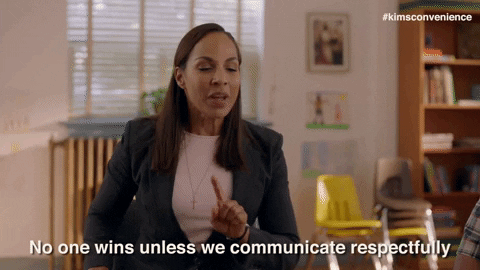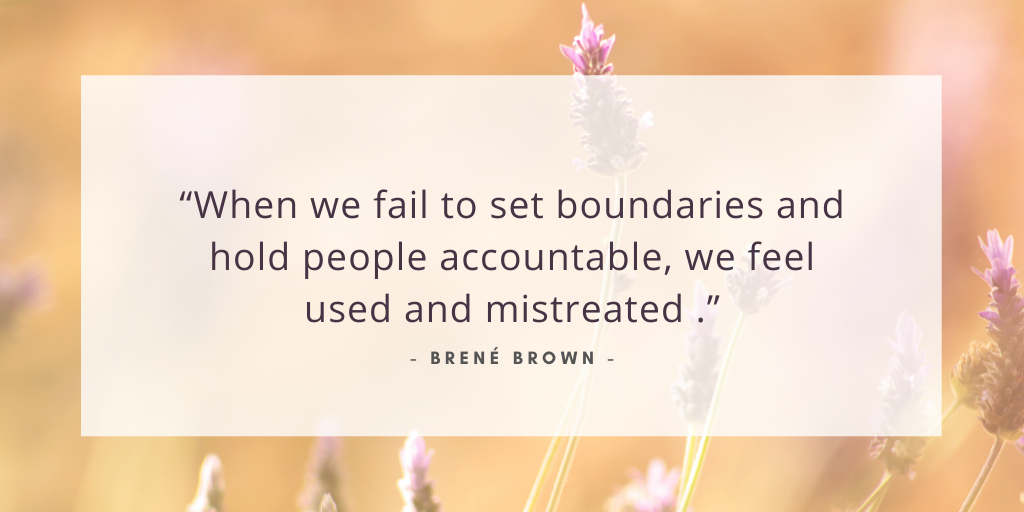As Student Affairs professionals we are often faced with the challenge of setting boundaries with student staff.
Yes, many of us are in this field because we love working with students, but failure to protect our energy can lead to burnout.
“Choosing authenticity means cultivating the courage to be imperfect, to set boundaries, and to allow ourselves to be vulnerable” — Brené Brown
Over my past few years as an SA pro, I’ve learned a few things about boundaries, including that there are many dangerous misconceptions, including:
- Setting boundaries does not mean that we are weak nor incapable of doing our jobs well; it simply means that we are being our most authentic selves by creating guidelines in order to preserve our energy.
- Establishing boundaries and being our authentic selves also helps us let go of perfectionism. Or as Brené Brown puts it, “To overcome perfectionism, we need to be able to acknowledge our vulnerabilities to the universal experiences of shame, judgment, and blame.”
- Struggling with shame over setting boundaries and potentially letting people down is common. But, know that in the end, it is all worth it. Yes, you may let some people down, but inevitably you are focusing on your energy. In order to be our absolute best selves, we must establish boundaries for the sake of our self-preservation.
We are not alone in our struggles to establish boundaries. Recently, I asked a few student affairs professionals via social media “What does setting boundaries with student staff look like for you, and how do you establish these boundaries?”

Many respondents said that they set clear calling and texting boundaries with their staff, avoid using their home for staff gatherings, and have conversations about the differences between physical and non-physical boundaries.
Cynthia Moberly, a residence hall director at Ball State University said that “Showing students that you respect their boundaries allows for more conversation about boundaries throughout the year.”
My own journey with boundary-setting hasn’t been easy. As an undergraduate, I was surrounded by many eager student affairs professionals who would show up to every event and invite my peers and I to call them whenever we needed anything.
When I began my first full-time professional role, I knew that I wanted to be nothing from those pros. I did not want to allow my students to knock on my door at all hours of the night. So, I made it clear to my resident assistants that I would not be available 24/7 even though it made me feel guilty.
Setting non-physical boundaries, such as communication guidelines, is critical. Although some SA pros may claim to be okay with students contacting them at all hours of the night, most institutions have procedures in place to prevent this from happening.
The greatest thing that I did for myself was to let go of the fact that I would never be that person. Instead, I embraced the fact that, even with boundaries, I could still do my job and support my students well.
I highly encourage you to consider the same. You can still be approachable while connecting deeply with students and creating space for yourself.
Now that I am in my seventh year as a live-in residence life professional, I can finally say that I have taken time to establish boundaries and to set clear expectations. Students have been receptive to my boundaries because I explain why they are so critical to my well-being.
Here are just a few of the top ways through which you can navigate boundaries with your student staff:
3 Strategies
1. Set clear communication expectations at the beginning of the year.
I set very clear email, phone call, and texting guidelines for my staff and write it them all out on an expectation sheet that I provide them. I make it clear that I like to go to bed early and that emergencies should be filtered through the on-call professional staff member.
Consider communicating similar expectations with your students, reflecting your schedule, availability, and boundary preferences.

It’s also helpful to ask students to email you any and all information that they’d like you to follow up on, even if they also text you or tell you the information in person. This will help students learn how to navigate professional correspondences while ensuring that you won’t forget what you need to follow up on.
2. Create space for your student staff to get to know the authentic you while also establishing your supervisory role.
Young professionals often struggle with establishing boundaries with students who are close to their own age. Although I have a number of lasting friendships with my RAs, I’ve told them directly that, as a supervisor, I’m not there to be their friend.
It may seem harsh, but when you use the term “friend” to describe your relationship, a line is blurred. You can be friendly, approachable, and authentic while remaining professional. It’s okay to be friends… after they graduate!
3. Hold your staff accountable for their actions and explain why accountability is so important.

As a supervisor, I ensure that I am holding my staff to a high standard at all times. When lines are blurred, supervisors struggle to hold their students accountable for their actions and to maintain a fitting level of professionalism.
So, continue to create space to listen to your staff’s concerns and feedback; this will give them space to use their voice. It also fosters genuine respect and shows that you are committed to your values and sense of professionalism.
You don’t need to say “yes” to being available 24/7 to your students, peers, and supervisors if it’s emotionally draining.
The final note that I will leave you with is this: Protect your space at all costs, be true to your authentic self, and don’t be afraid to communicate your needs when establishing boundaries. I know that this has allowed me to become a stronger professional, and I hope that it will do the same for you!
What have you learned about boundary setting? What are some of your cleverest tactics for establishing boundaries with student staff? Connect with us on Twitter @themoderncampus and @AngelaDelfine24.





